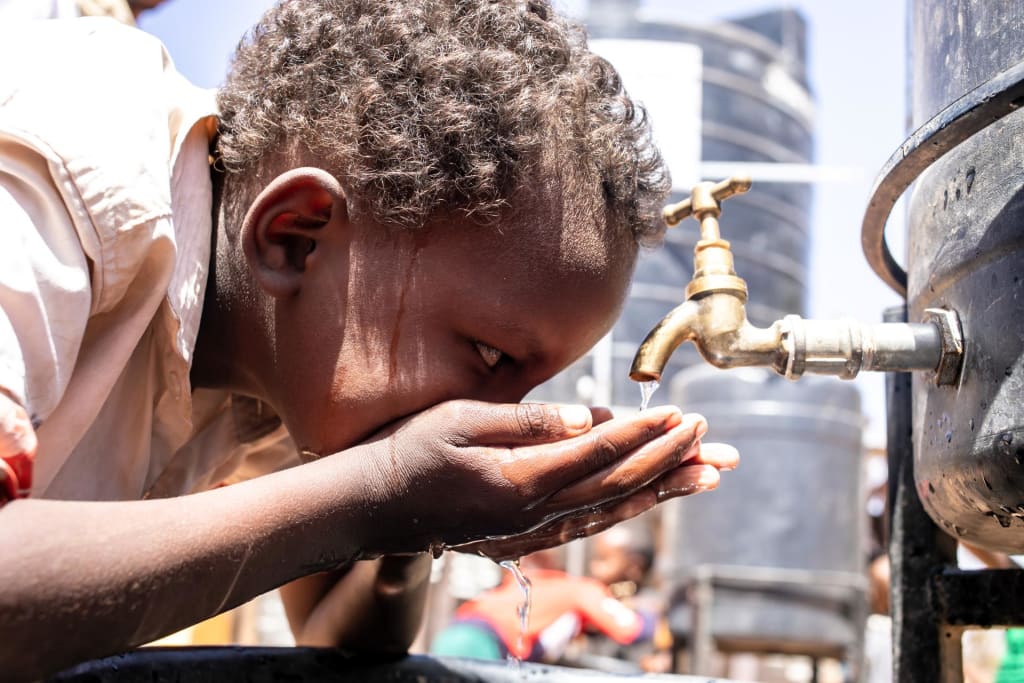
The occurrence of humanitarian crises on a massive scale is being propelled by conflict, poverty, and climate change, thereby putting millions of people at risk of famine. Among those who are most susceptible to the effects of famine and extreme food insecurity are children, who face a higher probability of experiencing severe malnutrition and death. Furthermore, these crises have long-lasting impacts on children, resulting in significant health and developmental difficulties.
When considering famine, the common association is a scarcity of food. However, the issue has evolved to encompass more than just food insecurity. It now includes challenges related to clean water, sanitation, and healthcare, particularly disease prevention and treatment. In the face of famine and food insecurity, access to water and sanitation is equally crucial for the well-being of children and families.
According to Manuel Fontaine, UNICEF Director of Emergency Programmes, malnutrition can be exacerbated or caused by unsafe water and sanitation. Even if a malnourished child eats enough food, they will not improve if the water they drink is contaminated. Diarrhoea resulting from unsafe water can prevent children from receiving the necessary nutrients, leading to malnutrition. Additionally, malnourished children are more susceptible to waterborne illnesses such as cholera. In fact, inadequate access to basic water, hygiene, and sanitation is believed to contribute to approximately 50% of global malnutrition.
Climate change and severe weather occurrences such as droughts and floods have the potential to exhaust or pollute water resources. This poses a significant risk to the overall quality and quantity of water that entire communities depend on. As households residing in regions experiencing extreme water scarcity struggle to access limited or unsafe water sources, they are forced to abandon their homes, thereby heightening their susceptibility to diseases and security threats.
The threat of famine is frequently propelled by conflict, exerting pressure on food and water supplies, as well as healthcare systems. An illustrative instance is the war in Ukraine, which has escalated food and fuel costs in regions where children are already suffering from hunger. Moreover, water, upon which humans heavily rely, is frequently exploited during armed conflicts, with deliberate attacks targeting water resources and the infrastructure necessary for providing safe drinking water.
In recent years, UNICEF has provided assistance in numerous conflict-related emergencies, most of which have been characterized by obstacles preventing access to water. These hindrances have taken various forms, including deliberate attacks on water infrastructure or unintended consequences. The repercussions of these disruptions can be particularly fatal for young children. In prolonged conflicts, children under the age of 5 face a significantly higher risk of succumbing to diarrheal diseases caused by unsafe water and sanitation compared to violence directly associated with the conflict.
During times of conflict or drought, individuals are often forced to leave their homes, leaving children and families at a higher risk for both abuse and health hazards. While on the move, children may be forced to consume unsafe water due to limited options. Additionally, makeshift camps that lack proper sanitation facilities can quickly become breeding grounds for disease. Children who are already vulnerable are at an increased risk for illness and may struggle to access medical care as they flee. Currently, approximately 9.2 million individuals have been displaced across the four countries facing famine.
In order to comprehend certain characteristics of water, it is necessary to have knowledge about its chemical composition. Illustrated in the diagram below, every water molecule is composed of one oxygen atom redand two hydrogen atoms white. The oxygen atom within a water molecule has a greater attraction towards negatively-charged electrons compared to the hydrogen atoms. Consequently, the oxygen atom has a slightly negative charge while the hydrogen atoms have a slightly positive charge. This disparity in electrical charge within a single molecule is referred to as polarity, which classifies water as a polar molecule.
When it comes to charged molecules, the phenomenon of opposites attracting is evident. In the case of water, the positive end (hydrogen) of one water molecule is drawn towards the negative end (oxygen) of a neighboring water molecule. This attraction leads to the formation of weak bonds between adjacent water molecules. These bonds are known as hydrogen bonds. It is important to note that the strength of bonds between molecules is not as robust as the bonds within molecules. However, in water, there are numerous hydrogen bonds between water molecules, surpassing the number of covalent bonds within a single molecule. Although the hydrogen bonds may not possess great strength, they are sufficiently strong in water to maintain the cohesion of nearby molecules.





Comments
There are no comments for this story
Be the first to respond and start the conversation.